
SmartDesk Levitate Unveiled: Challenging Assembly Process Meets Satisfactory Functionality Reviewed

SmartDesk Levitate Unveiled: Challenging Assembly Process Meets Satisfactory Functionality Reviewed
Key Takeaways
- Autonomous’ SmartDesk Levitate sensor is too sensitive, reducing usability and increasing frustration.
- Assembly of the desk is complex and time-consuming due to a four-leg design and elaborate wiring.
- Despite sturdy construction and durable materials, the Levitate misses the mark with a gimmicky sensor and intrusive power hub.
Autonomous SmartDesk Levitate really missed the mark by swapping out a traditional standing desk control panel for an overly sensitive, poorly placed motion sensor that adjusts the desk based on hand movements. Rather than optimizing space, the sensor takes too much away and actively intrudes on the user experience.
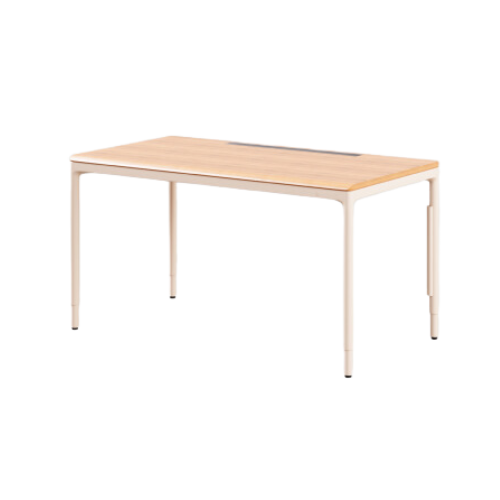
Autonomous SmartDesk Levitate
5/ 10
Autonomous SmartDesk Levitate puts a new spin on standing desks. Its sensor simulates levitating based on hand movements. Solid steel and natural ash wood make this desk durable and sturdy, extending from 26.3 to 44.1 in.
Pros
- Four-leg design doesn’t look bulky
- Ash wood desktop offers a clean aesthetic
- Power strip hub is customizable to your needs
Cons
- Sensor is way too sensitive
- Sensor and hub take up valuable desktop space
- Assembly was messy and chaotic
How We Test and Review Products
Price and Availability
The Autonomous SmartDesk Levitate is available exclusively through Autonomous’ online store . The model reviewed sells for $999, though a larger version (59 x 31.5in) retails for $1,299.
Specifications
Brand
Autonomous
Lifting Mechanism
Quad-motor
Maximum Load
380lbs
Desktop Size
53 x 29in
Materials
SPCC steel & Solid ash wood
Height Adjustable
26.3 to 44.1in
RGB Lighting
No
Noise Level
< 45db
Expand
Assembly: More of a Chore Than Needed
Before getting to the meat of it, assembly is key when considering office furniture. I have assembled quite a few standing desks over the past year alone. I’m used to the flow and, for the most part, can do it without much assistance from the manual. That was not the case with the SmartDesk Levitate. I question going with four individual legs, as that added more opportunity for a malfunction and made the assembly that much more difficult.
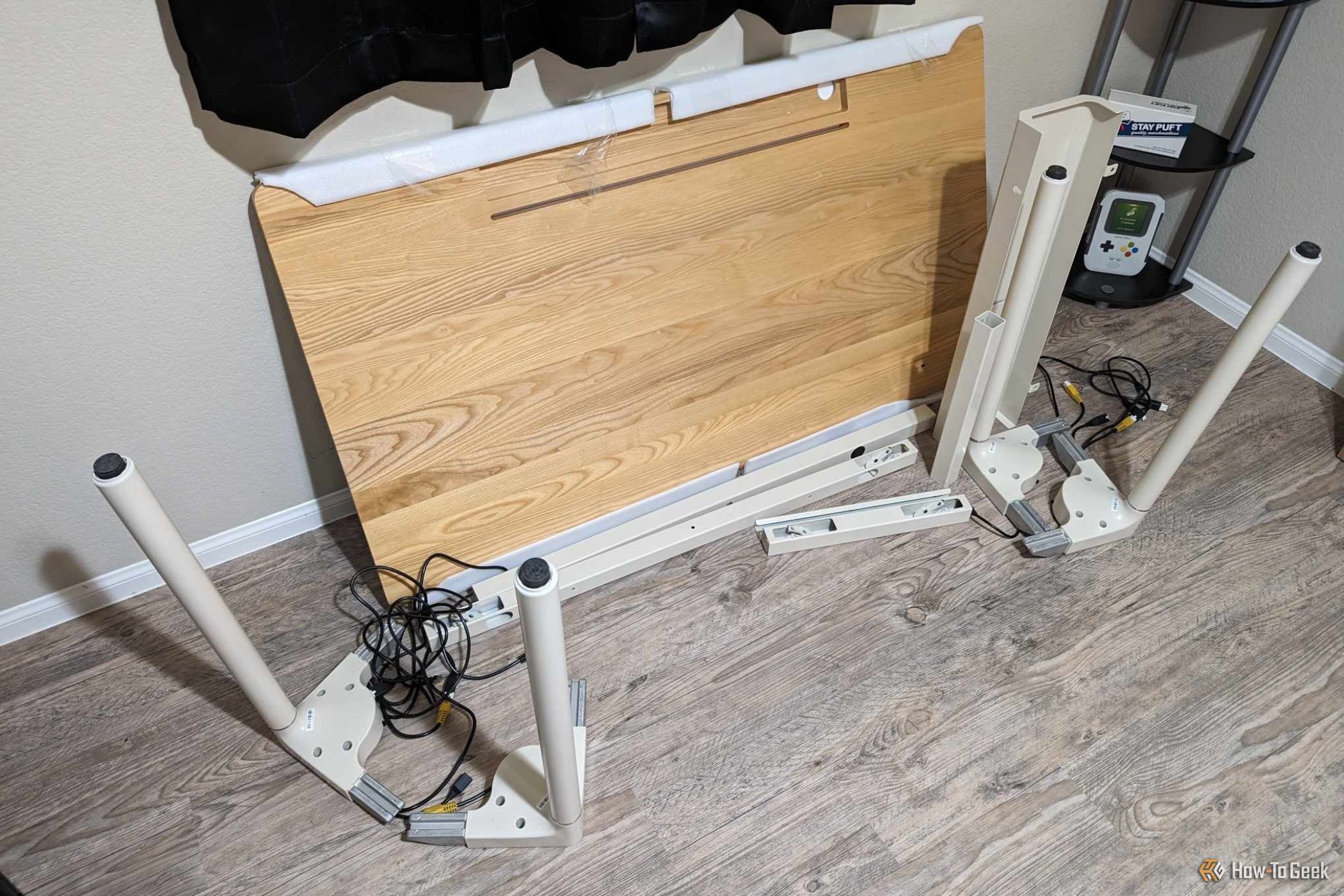
Mark LoProto / How-to Geek
I needed to wire each leg to its counterpart, which meant fussing with tight built-in wire wells and various connectors. Making matters worse, the instructions weren’t accurate to the actual assembly. As I got to the second to last step, I realized the instructions had mislabeled two legs, which meant they had mismatched wires. I stepped away for a minute before returning to break the table down to the initial steps.
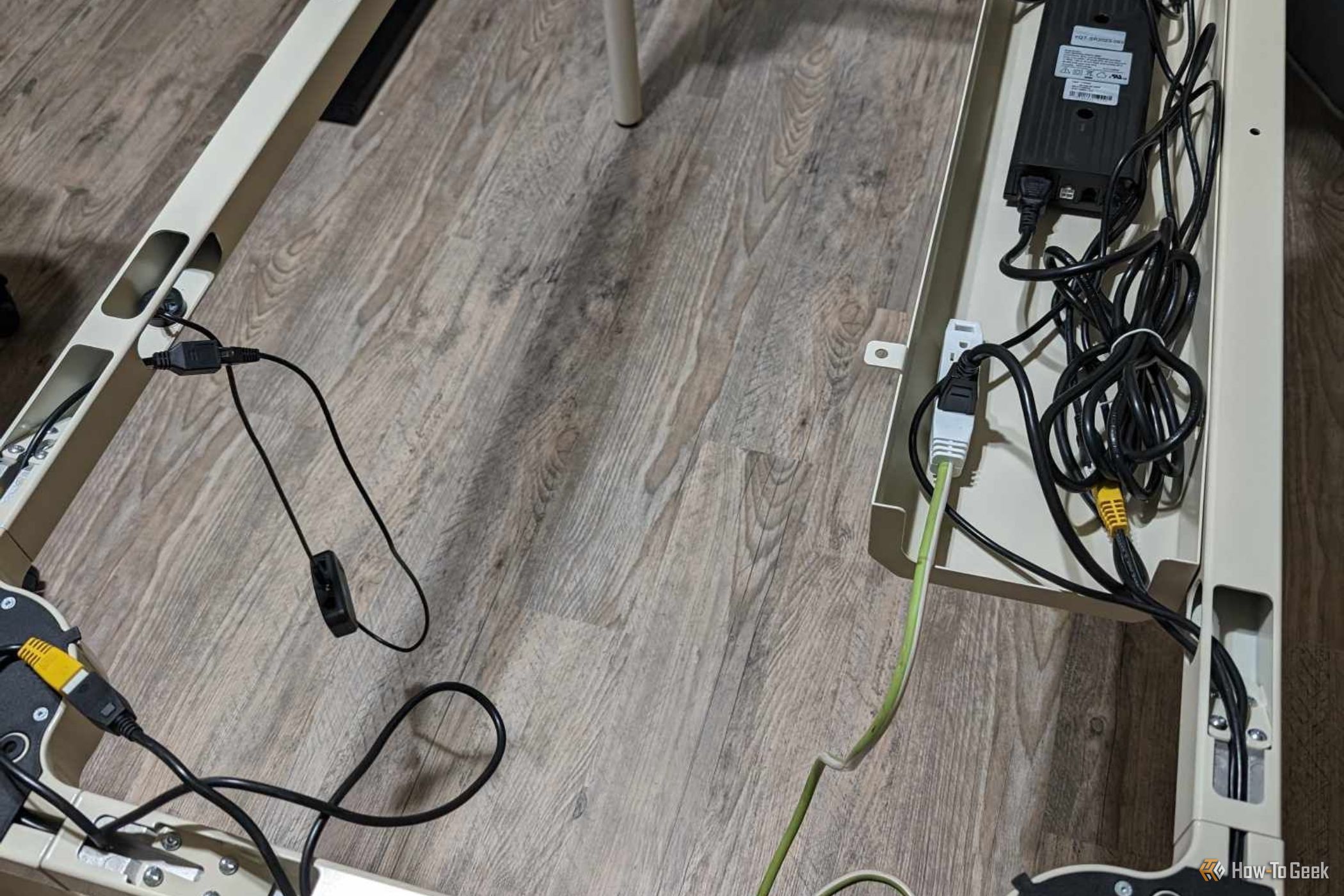
Mark LoProto / How-to Geek
Durable Frame and Sturdy Desktop
A two-motor setup would have been infinitely easier to assemble. I tend to find the thicker dual legs on models like FlexiSpots Q8 and SecretLab’s Magnus Pro offer better stability. The SmartDesk Levitate’s frame is made of thick steel, so while the legs were a little shaky, I was confident it wouldn’t randomly collapse. I was surprised by the 310-pound weight limit, even at its maximum height of 44.1 inches. I expected it to be lower, especially considering the Magnus Pro tops at 265lbs and feels like a more stable desk.
The desktop itself is also a nice, light wood finish. It reminds me a little of FlexiSpot’s Q8 Pro Standing Desk, just thicker. Unfortunately, the thick desktop and steel frame made it impossible for me to use my clamp monitor arm without having to modify the arm in ways it’s not meant to be modified.
The Levitate Sensor: Who Asked for This?
I ask earnestly and not with an air of sarcasm. There must have been a roundtable at Autonomous where the creative leads addressed some users’ concerns about the current standing desk controls. Otherwise, I can’t fathom why they’d dilute an easy-to-use control panel to a singular button that frequently glitches and a sensor that makes part of the desk completely unusable.
Admittedly, when I first received the pitch email for the Levitate, I was intrigued. However, the concept of a desk that moves based on hand movements sounds much better than it is. At first, I didn’t consider how the sensor is built into the top of the desk. It does allow you to hover your hand over it and adjust the height easily, but it also renders that spot (along with a good radius around it) impractical.
Your browser does not support the video tag.
The biggest issue is that the sensor responds to literally anything. If I had a book too close and moved it, the sensor either picked it or its shadow up and reacted. Even my cats set the desk off, which is when I realized how much of a niche audience this will have. I ultimately had to cover the sensor when I wasn’t using the desk so my cats wouldn’t jump up and kick the sensor off. Initially, I kept returning to the office to find the table at either the maximum or minimum height.
It’s Not All Bad
I think there’s a neat idea in here. This implementation just isn’t it. I was surprised mainly by how well the sensor responded to my hand movements. I don’t recall an instance where it raised when I wanted it to lower or didn’t pick up that I was moving my hand. So long as I moved slowly and steadily and kept my hand at the same distance from the sensor while it moved, it worked well. If the sensor stopped registering my hand, which happened immediately after assembly and perhaps a week into use, the underside button is used to reset the system.
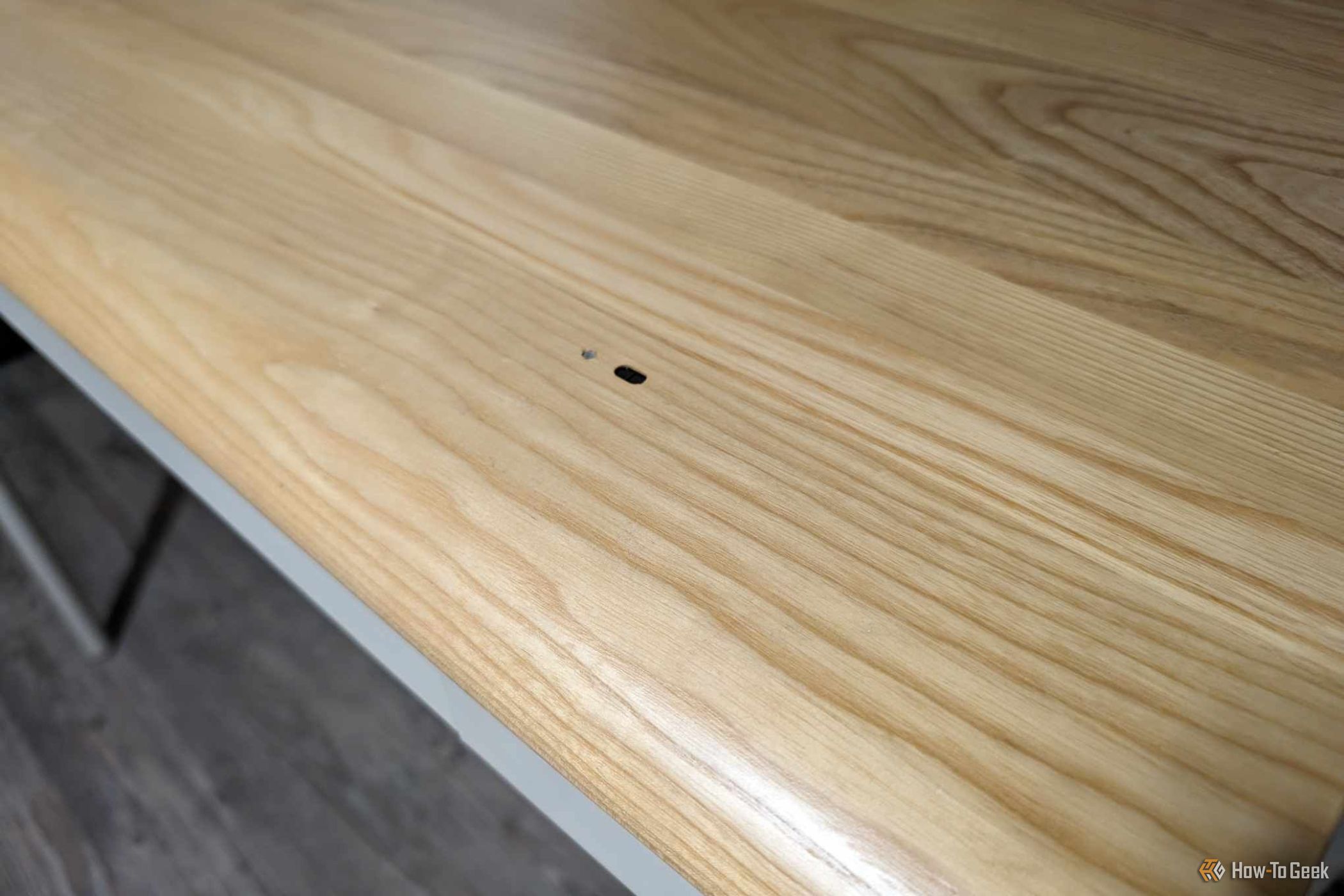
Mark LoProto / How-to Geek
The button also adjusts the desk, but less efficiently than a control panel with directional arrows. Most of the time, pressing it would only move the desk in one direction until it reached the maximum or minimum height. Then, it would shift gears and move in the opposite direction. You are supposed to use the sensor, so I get why this isn’t some fine-tuned mechanic. Still, I think a secondary button to allow for intuitive push-button height adjustment is necessary for the best user experience.
The Built-In Power Strip: A Neat But Intrusive Feature
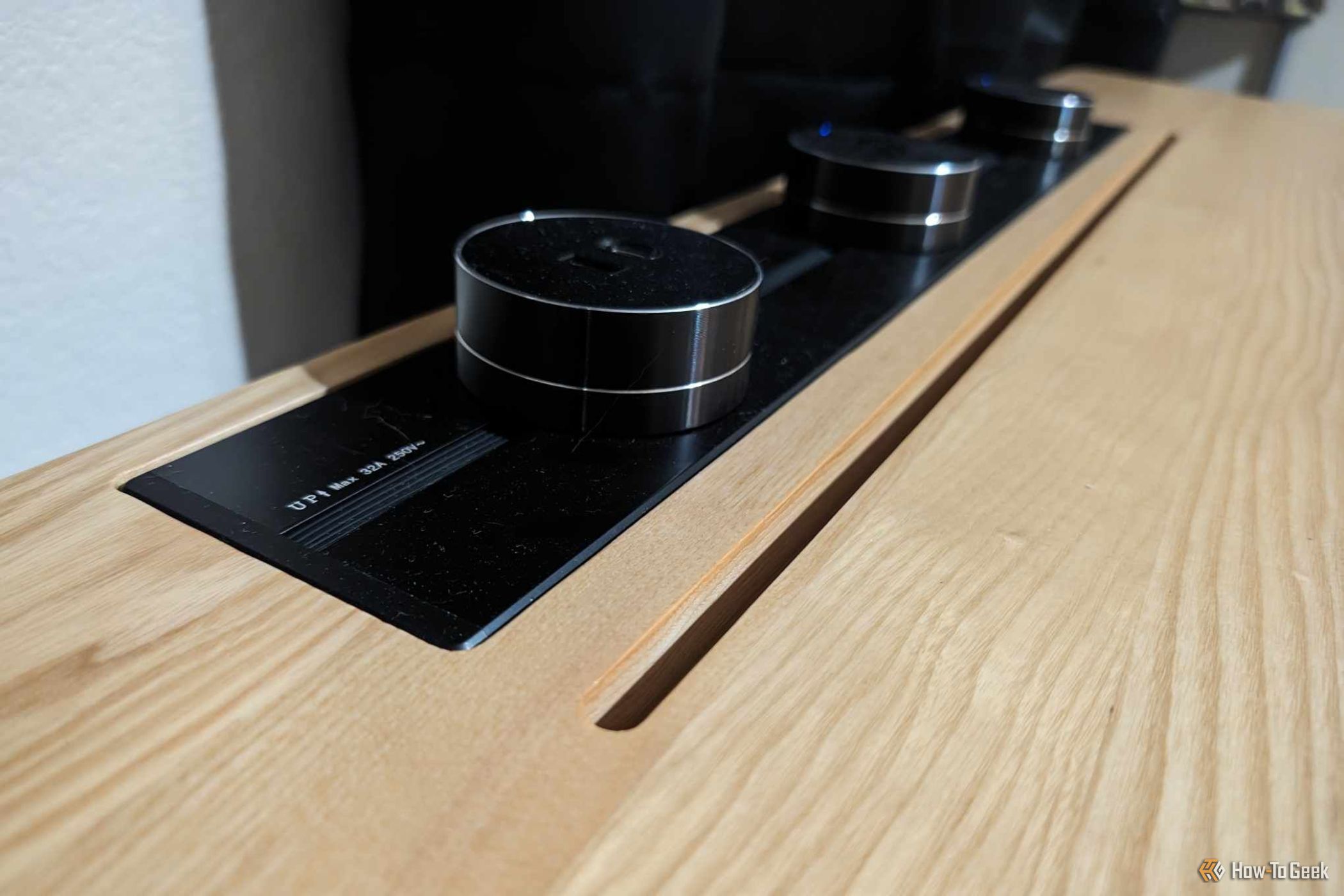
Mark LoProto / How-to Geek
All of the added features of the Autonomous SmartDesk Levitate detract from the available usable space. What I love about my Magnus Pro is that the power supply is hidden in the leg, and you have a hidden well to store a power strip. Nothing gets in the way, and I have the full width and length of the desk to use. Autonomous includes a built-in groove for a removable power hub that allows you to add and remove USB and AC ports. This and the desk motors plug into a small strip hidden in the wire well, which minimizes the number of wires running out of the desk. For whatever reason, Autonomous chose a green strip, an ugly addition exacerbated because the included magnetic cover meant to mostly hide the cable is so weak that it slides down the metal legs and is virtually useless.
It’s a neat feature convenient for charging your phone or some other peripheral. It did do both for me, as I plugged in my wireless magnetic charger and desktop air filter. I like the idea in practice. When implemented, it lends to a more chaotic desktop by taking up a sizable amount of room and encouraging users to plug in things like monitors. Monitor power cords are long, so you’ll need to do some fancy wire management to make this setup look good, especially since the Levitate doesn’t have an overly functional or easily accessible wire well.
Promo materials suggest routing your monitor’s cord into the well and pulling it back out to hide excess, but the small cutout limits the types of cords that will fit. You can just hide the wire and leave the ends exposed, but that’s less wire management and more creating a tangled mess elsewhere.
Should You Buy the Autonomous SmartDesk Levitate?
It is rare that I outright don’t recommend something. I feel there’s a market for everything. As much as I typically like Autonomous products, though, I don’t see the market for its SmartDesk Levitate . From the incredibly frustrating assembly to the impractical sensor; too many kinks need to be worked out for something that costs $999.
Even if I overlook the issues I have with wire management, the included power hub and even the desk’s slightly wobbly legs, I’m still left with a desktop with unusable spots. If it was all toward the rear of the desk, I’d be able to move past it. The sensor is exactly where my arm hovers when using my mouse. You can imagine how many times the sensor clicked on, thinking I was readying it to move. Thankfully, it’s at least smart enough to distinguish between something hovering by and a hand actually getting closer and further away.
For its cost, I think there is way too much that needs to be addressed before this standing desk is anything beyond fodder for technology lovers like myself.

Autonomous SmartDesk Levitate
5/ 10
Autonomous SmartDesk Levitate puts a new spin on standing desks. Its sensor simulates levitating based on hand movements. Solid steel and natural ash wood make this desk durable and sturdy, extending from 26.3 to 44.1 in.
Also read:
- [New] 2024 Approved Dynamic Content Presentation via FB Slideshows
- [New] Evaluating Every Aspect of Du Recorder Design & Function for 2024
- [Updated] Cutting-Edge Techniques for Audience Engagement on Twitch for 2024
- [Updated] Top 8 Innovative, Affordable Online SRT Services Exposed
- 「Movaviで簡単! オンライン無料AAC形式へのMOVファイル変換」
- AI: Your Partner in Pushing Boundaries of Content
- Discover the Best Software Solutions for Fixing Damaged Pictures (PC/Mac)
- Download Updated Drivers for Your AMD Ryzen Processor - Now Available
- Elite English Soccer Clubs Ditch Social Networks Against Online Violence
- Gratuit Online Convertisseur Pour Les Fichiers DTS en Format M4V - Movavi
- Gratuito E Veloce: Come Trasformare I File RAW in Formati Di Immagini JPG Con Il Convertitore Ideale per Google Ranking
- İdeal Online Daha Büyük Bir Yapayıcı Olan Video Boyutunu Belirleme Üzerine Araştırma Ve Çözümler
- Methods to Access Previous Facebook Journeys (Mobile/Desktop)
- Movavi Online - Convertir De Forma Gratuita Archivos WMA a Formato Ogg
- Movavi提供的免費線上解決方案:直覺式VOB至MP4格式轉換器
- Top 5 Ideale Videostile Voor De Optimalisatie Van Uw YouTube-Content: Onderzoek Door Movavi
- Transforma Tu Video QuickTime (QT) en Format MOV Gratuito en Línea Usando Movavi
- Title: SmartDesk Levitate Unveiled: Challenging Assembly Process Meets Satisfactory Functionality Reviewed
- Author: Joseph
- Created at : 2024-09-29 22:07:32
- Updated at : 2024-10-05 18:23:08
- Link: https://solve-helper.techidaily.com/smartdesk-levitate-unveiled-challenging-assembly-process-meets-satisfactory-functionality-reviewed/
- License: This work is licensed under CC BY-NC-SA 4.0.